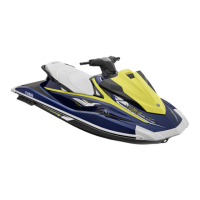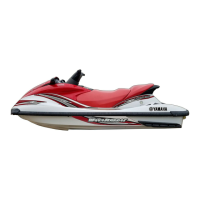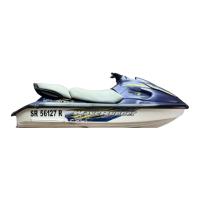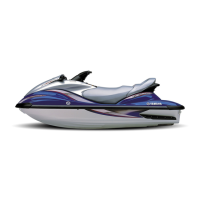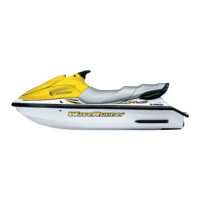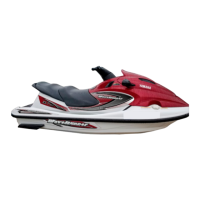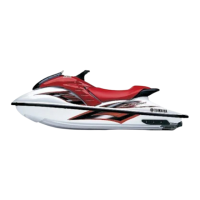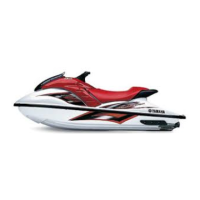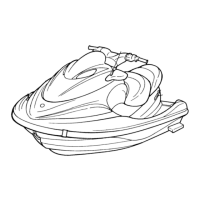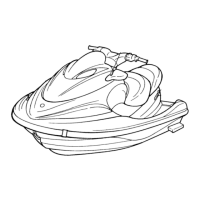
Do you have a question about the Yamaha 2009 Wave Runner VX Deluxe and is the answer not in the manual?
| Displacement | 1052cc |
|---|---|
| Cylinders | 4 |
| Compression Ratio | 11.4:1 |
| Starting System | Electric |
| Lubrication System | Wet sump |
| Horsepower | 110 hp |
| Fuel Capacity | 15.9 gallons |
| Maximum Capacity | 530 lbs |
| Bore x Stroke | 76mm x 58mm |
| Fuel Delivery | Electronic Fuel Injection (EFI) |
| Length | 126.8 inches |
| Width | 46.1 inches |
| Seating Capacity | 3 |
| Top Speed | 53 mph |
| Hull Material | Fiberglass |
| Color Options | Black |
Introduction for the owner/operator, emphasizing safe and proper use of the watercraft.
Details on PRI-ID, HIN, and engine serial numbers for identification and ordering parts.
Information regarding emission control standards and approval labels for the watercraft.
Location and significance of the manufactured date label on the watercraft.
Diagram illustrating the location of various important labels on the watercraft.
Crucial safety warnings and alerts to be read before operating the watercraft.
Further safety warnings and precautions regarding operation and potential hazards.
Safety instructions and warnings related to operating the watercraft safely.
Details on specific warning labels, including Canadian regulations and CE marking.
Defines minimum operator age, supervision requirements, and passenger load limits.
Guidance on safe cruising, avoiding hazards, and operating conditions.
Specifies essential equipment like PFDs, protective clothing, and eye protection.
Lists recommended items to carry for safety and emergency situations.
Information on hazards like exhaust fumes and watercraft operating characteristics.
Diagrams and labels identifying key external and internal components of the watercraft.
Explains the operation of seats, hoods, and various control mechanisms.
Details on fuel tank filler cap operation and the remote control transmitter.
Instructions for using the engine stop switch and shut-off switch/cord.
Description of the multifunction information center and its indicators.
Explanation of the throttle lever, steering system, and shift lever functionality.
Information on the Yamaha Security System and available storage compartments.
Specifies recommended fuel type, octane rating, and engine oil grades.
A comprehensive checklist of items to inspect before launching and operating the watercraft.
Details on operating the throttle lever, steering system, and shift lever.
Step-by-step guide for engine break-in, starting, and stopping the watercraft.
Guidance on operating the watercraft, boarding, riding with passengers, and basic handling.
Instructions for safely storing the watercraft, including flushing the cooling system.
Guidance on lubricating components and maintaining the watercraft battery.
Procedures for cleaning the watercraft and performing basic maintenance adjustments.
Schedule for routine inspections, adjustments, and replacements based on hours or months.
Procedures for checking the fuel system, fuel tank, and air filter element.
A chart outlining common problems, possible causes, and remedies for the watercraft.
Steps to take in emergency situations like cleaning the jet intake or jump-starting the battery.
Instructions for replacing fuses, towing the watercraft, and handling submerged units.
Details on watercraft capacity, load limits, and physical dimensions.
Information on engine type, displacement, performance metrics, and fuel consumption.
Specifications for fuel, oil, spark plugs, battery, and drive unit.
